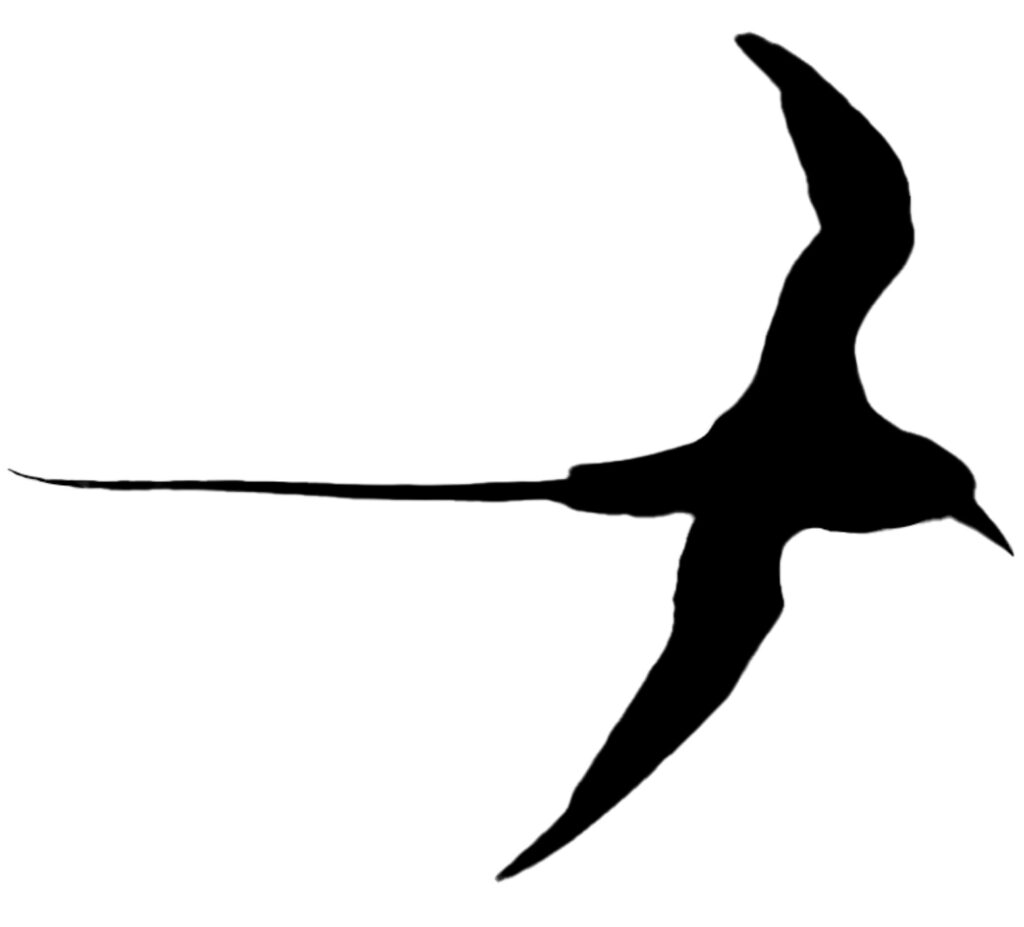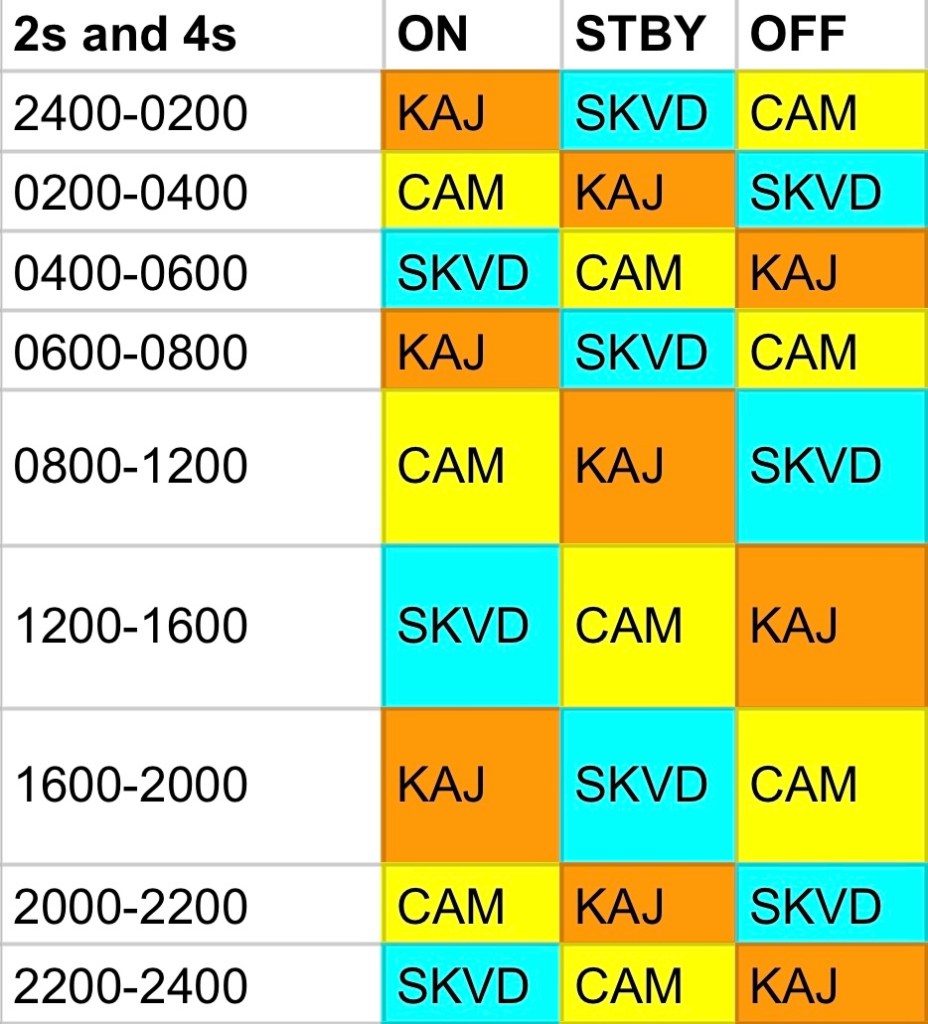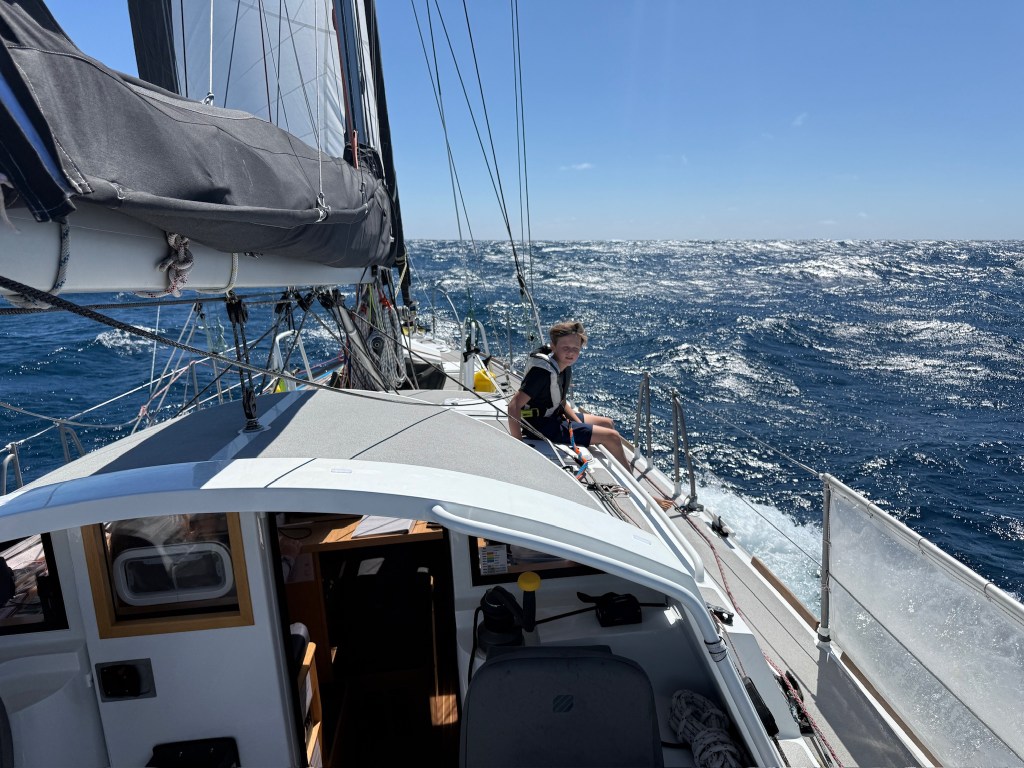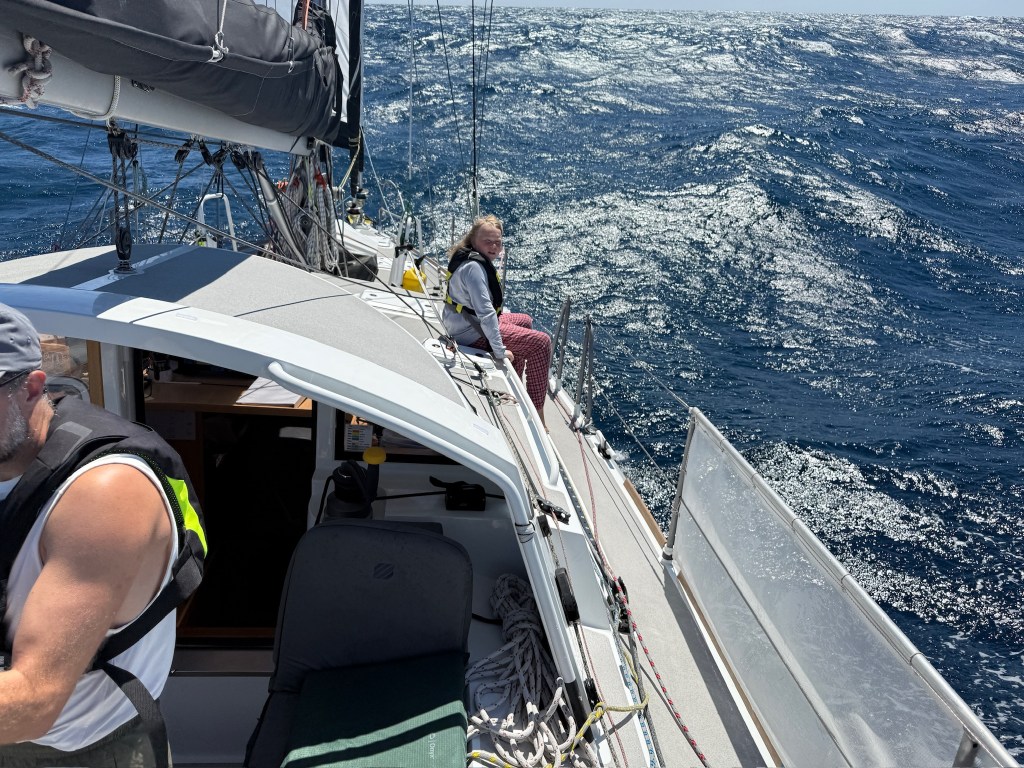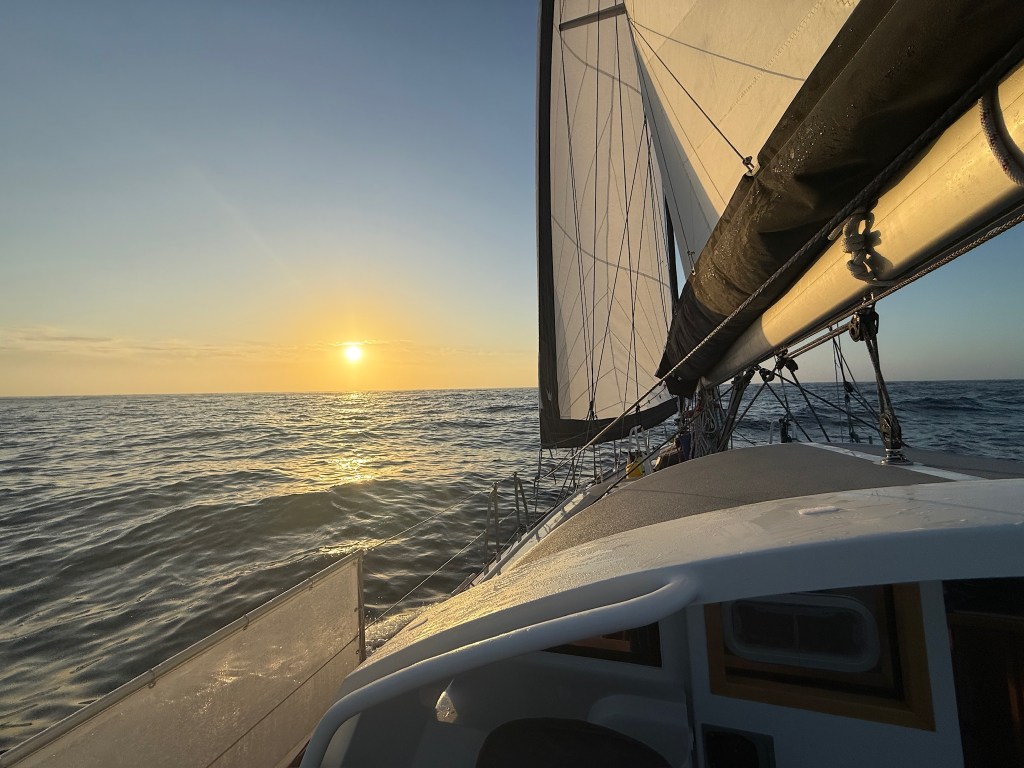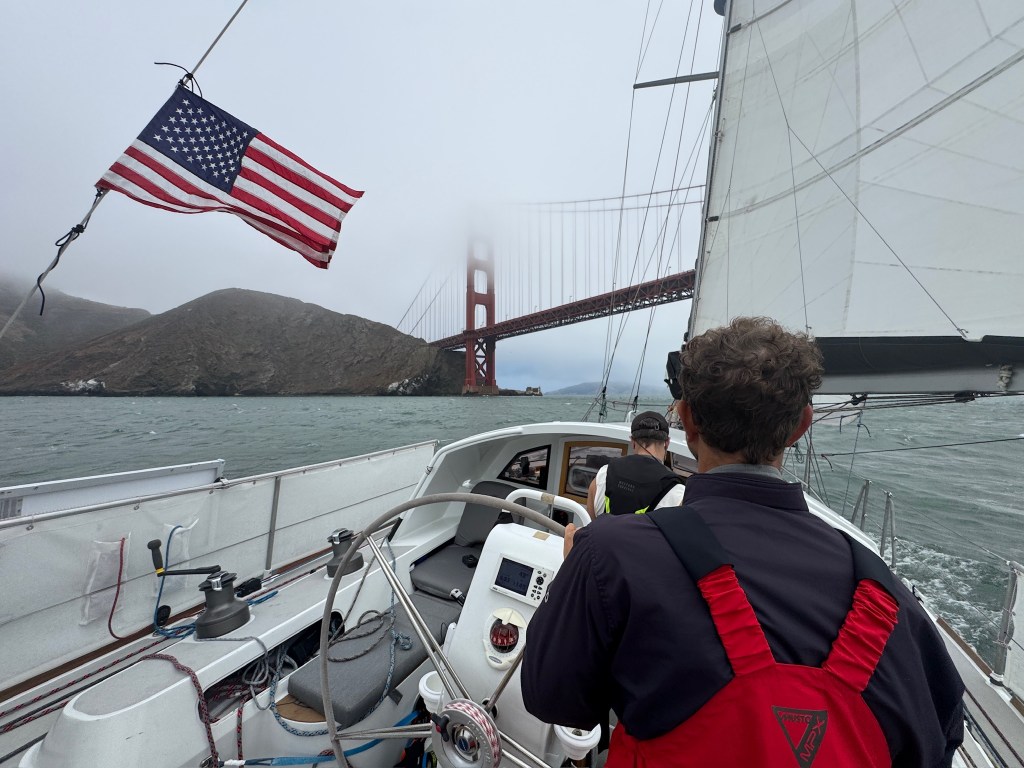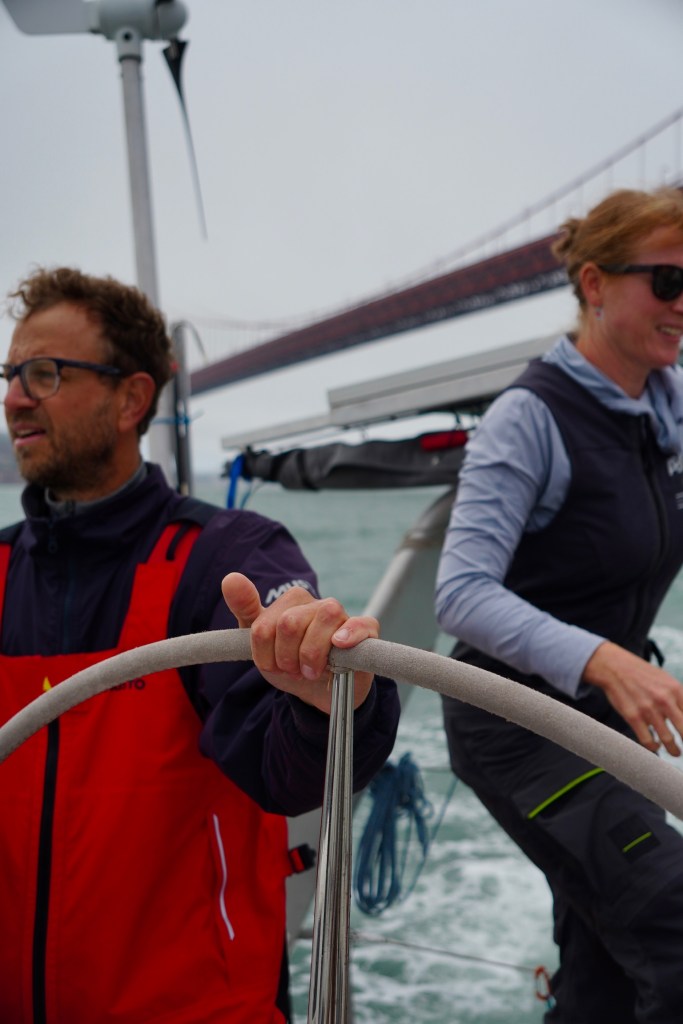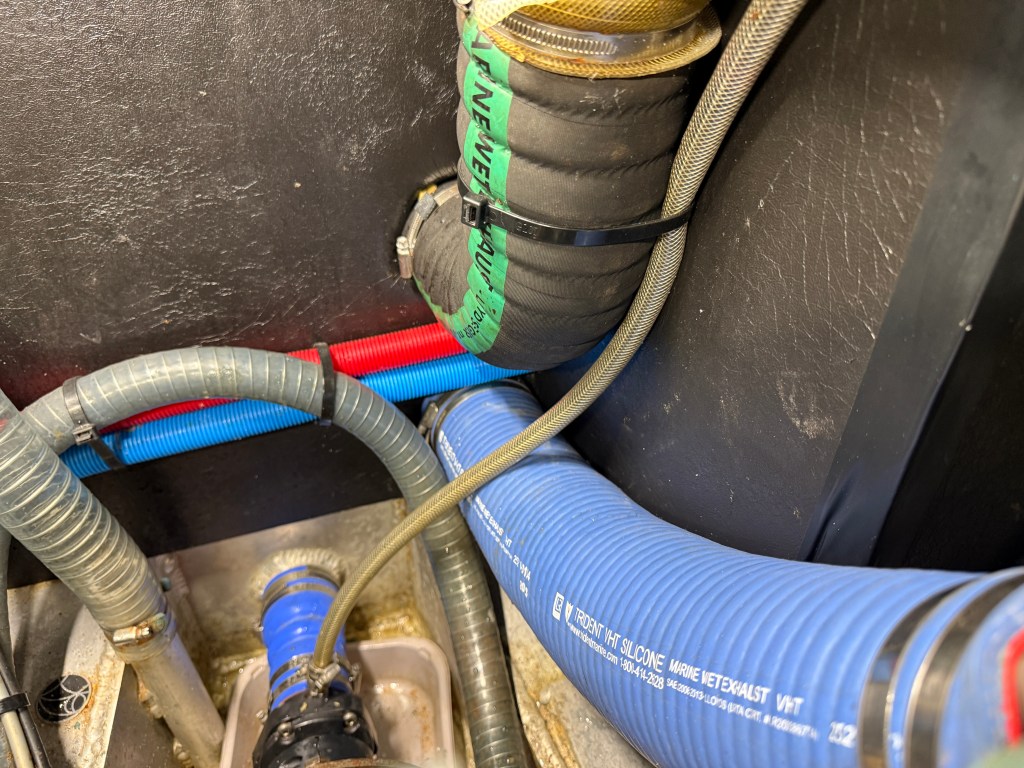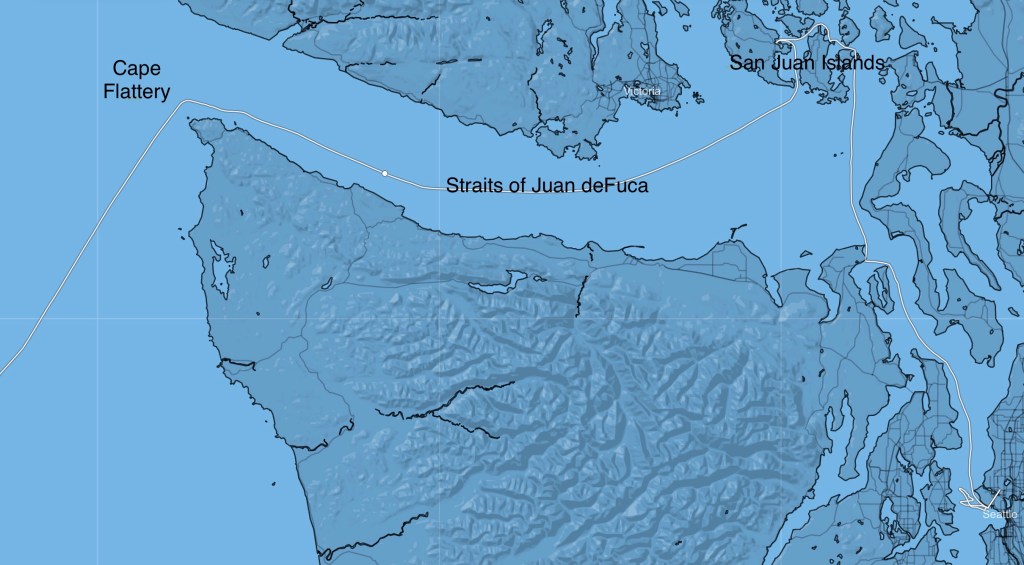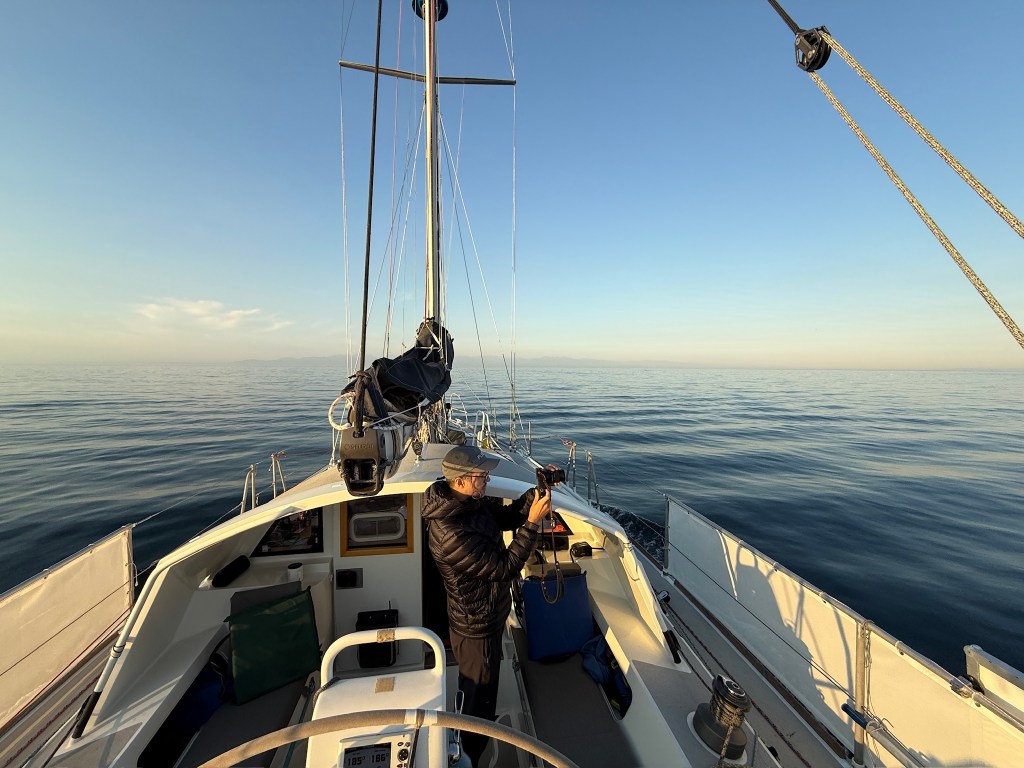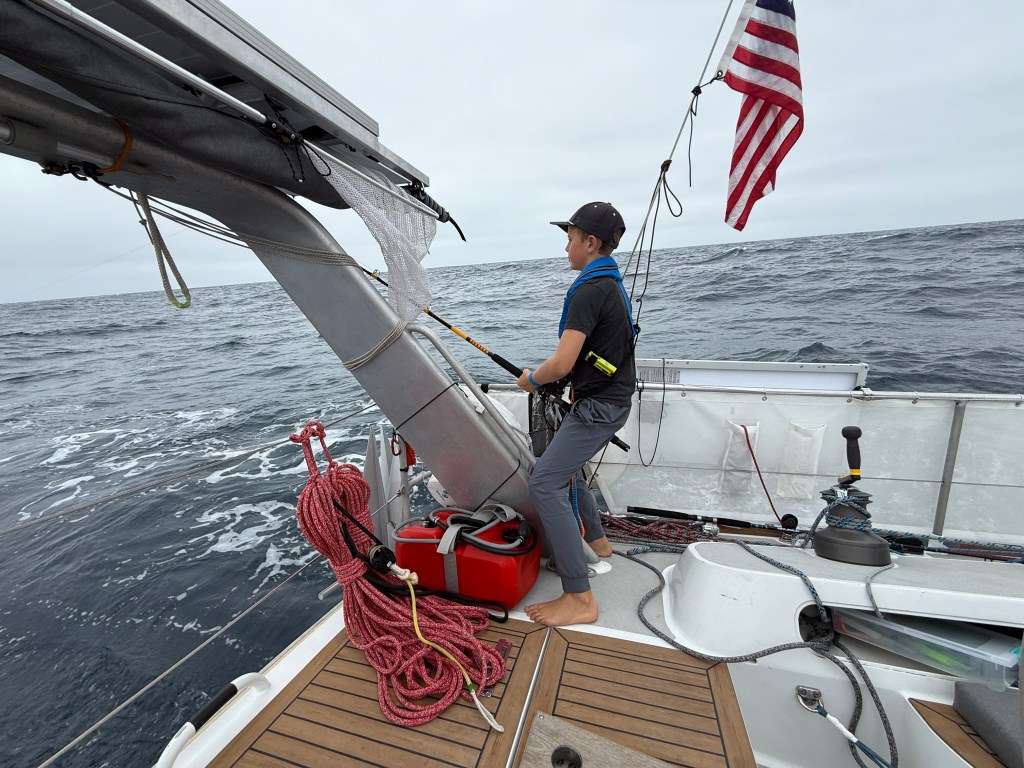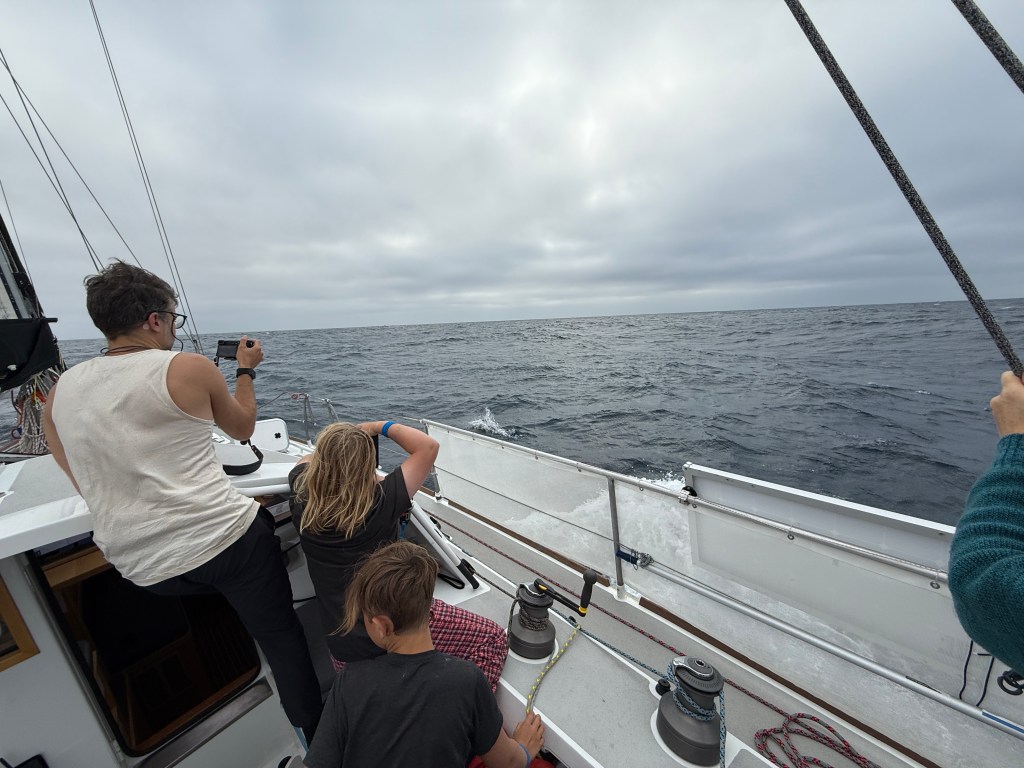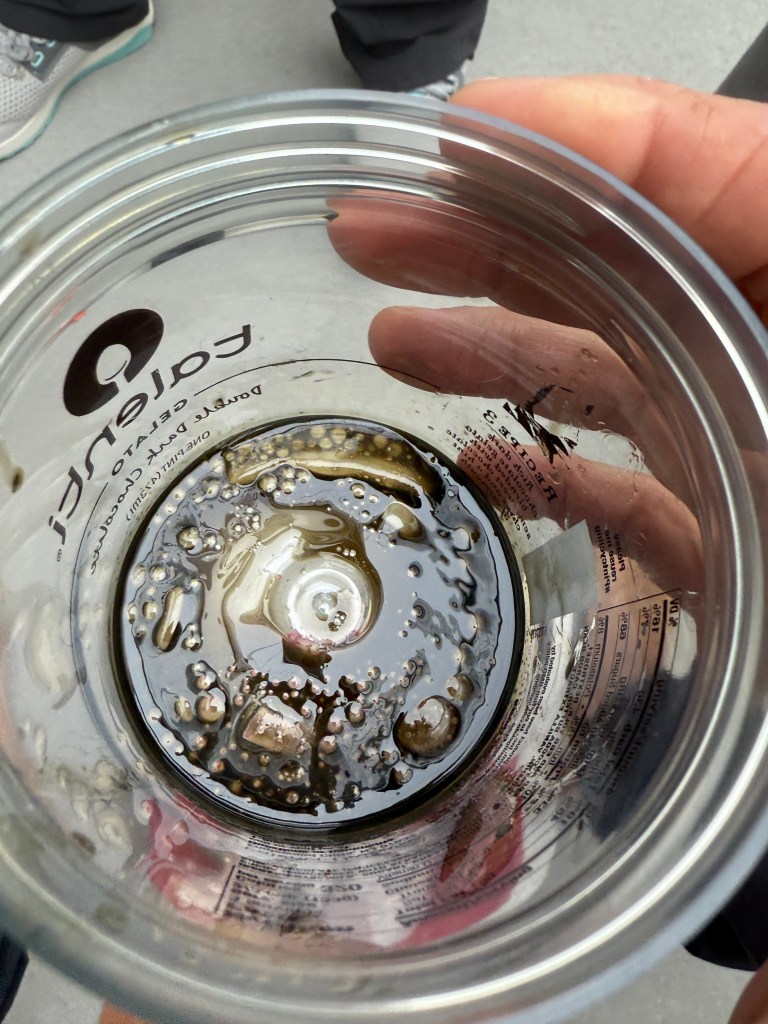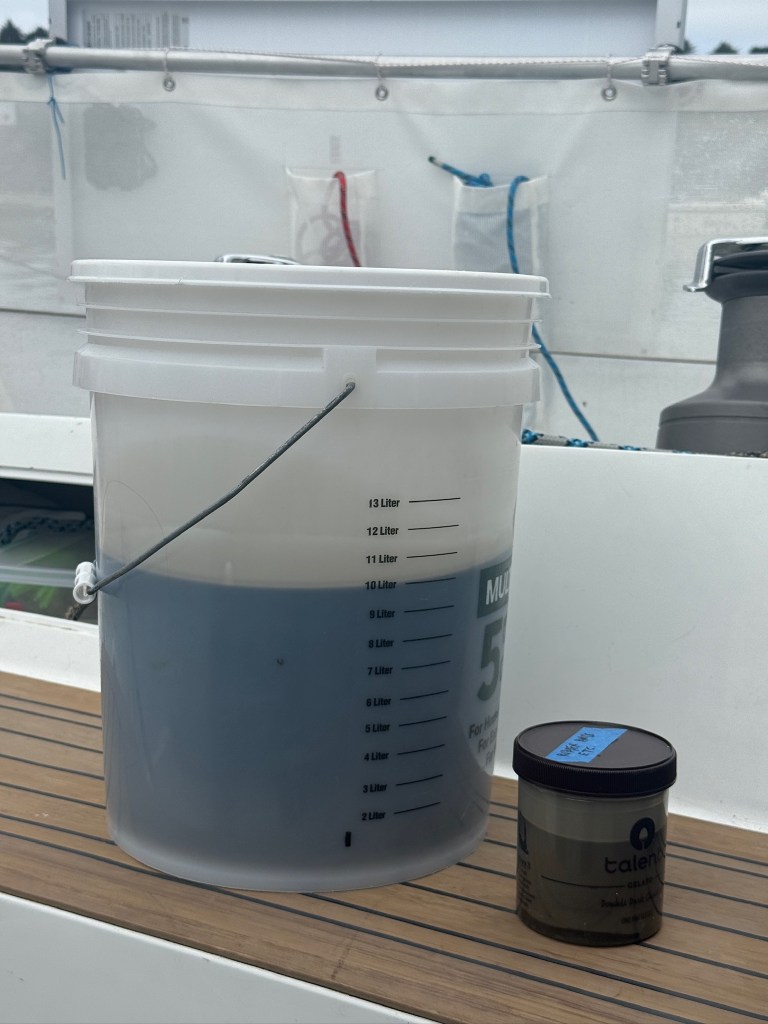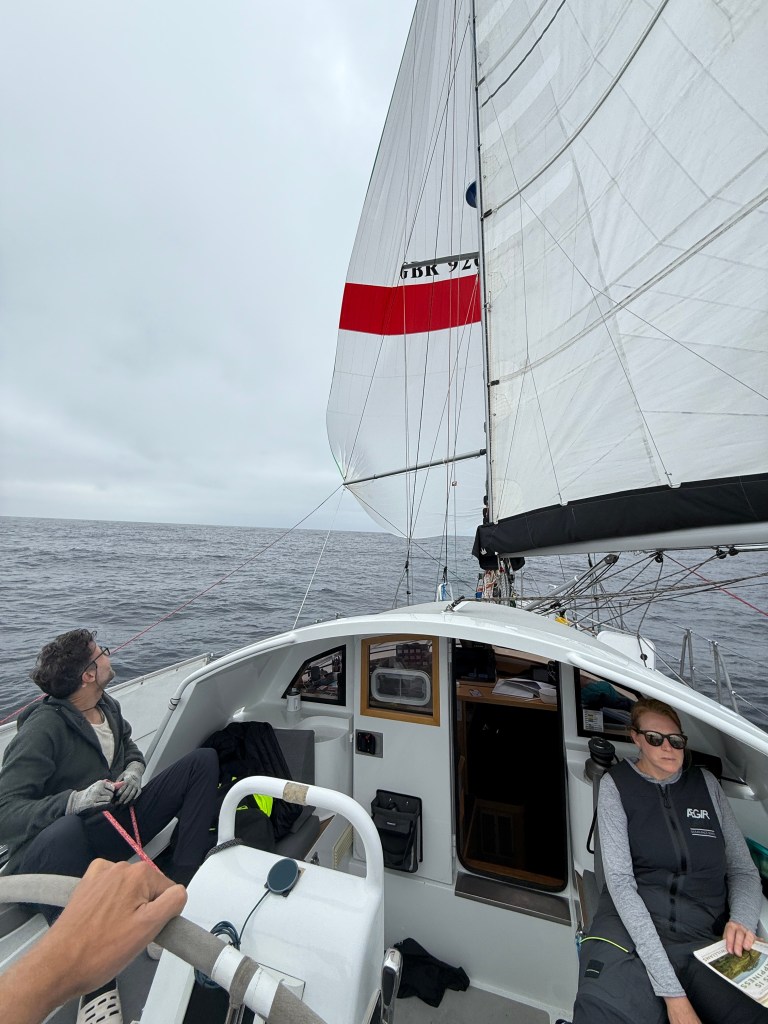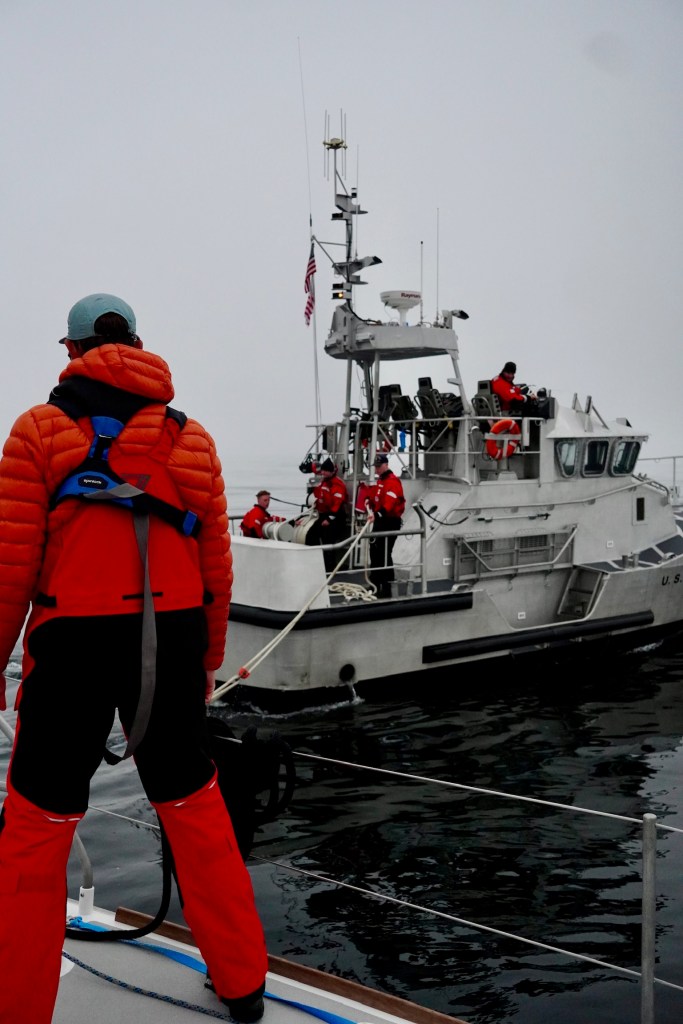I appreciate a little subjectivity in cruising guidebooks, so I love the Dreamspeaker series which includes hand-drawn charts of most of the anchorages in the Salish Sea with notes on where to find rope swings and blackberry bushes. Now that we’re outside Dreamspeaker territory, I find myself Googling “favorite anchorage [our current location].” Of course, any anchorage is only as good as the weather you have there. At Yellowbanks, we had it all.


We’d been circumnavigating Santa Cruz Island in the Channel Islands for a few days and knew a strong northwesterly was approaching. We decided to ride it out at Yellowbanks, an anchorage on the southeast end of the island with a sandy bottom and good holding.

The Friday we arrived was perfectly warm and calm. We were swimming almost before the anchor was set, no wetsuits needed. We spent the afternoon with Kevin (a different Kevin!) and Melissa of Dark Star, joking about the crazy winds that never materialized and the boats that arrived after us and anchored awkwardly close. They told us about a night they spent in Echo Bay on Sucia Island when a rare thunderstorm rolled in after dark, half of the 50 plus boats in the bay dragged anchor, and frantic yelling rang out through the night. We remembered a 4th of July we spent in the very same spot during the early days of COVID when the only sound that broke the perfect calm was a lone trumpet playing America the Beautiful at dusk. Which experience would we have tonight?

By Saturday morning, we could finally see white caps to the south, but couldn’t feel much in our cozy anchorage. The remote cliffs of Anacapa Island beckoned. We hailed Dark Star on the VHF to see if they wanted to join for a day sail. Kevin, a pilot, sounds pretty professional on a radio, but his natural enthusiasm comes through: “Copy Flyer. I don’t think I need to check with the rest of my crew. We’re in!” Before long, Kevin and Melissa arrived together on a single paddleboard.

We didn’t get far before we felt the wind, 20-25kts and building. And more westerly than expected. It looked like we weren’t going to make it around Anacapa after all, but we got far enough to say we’d seen through its iconic rock arch. It was a rough ride, and even more so when we turned back into the wind to beat our way home. The adults, who had knowingly enlisted in this jaunt, laughed through it. James, who had no say in the matter, emerged from his cabin wearing seasickness wristbands, curled up miserably in the cockpit, and delivered his catchphrase: “This is NOT a vacation.”

By the time we got back to the anchorage, we were in a full fledged gale and every boat other than Dark Star (unoccupied, but looking solid) had fled the scene. Wind gusted down the famed yellow banks at 40kts — no need to back up on the anchor to set it — and whipped sea spray into the air like smoke on the water. The sounds were incredible. There was no chance of getting Kevin and Melissa back to their boat until things calmed down.
Steve predicted that the katabatic winds charging down the hills would die around sunset. We laughed pretty hard when they seemed to pick up after 6pm. By the time the cops showed up (actually the flashing lights of TowBoatUS securing a boat with torn sails to a nearby mooring ball), the three-hour tour had become a slumber party.
Steve and I found this turn of events delightful. We had plenty of food and drink to share — though only half a green cabbage left as far as vegetables go — and were happy to lower our salon table to bed height. Kevin and Melissa, an emergency vet, could have entertained us for days with stories of “dead” turtles come back to life and back woods plane crashes caused by full bladders. But the kids, who have a sixth sense for parental distraction and a Starlink signal, holed up in their own cabins to be entertained by screens.

The next morning, we woke up to a completely different anchorage: calm and sunny. Kevin greeted Steve with a “Morning, Dad!” and paddled back to Dark Star to grab their dinghy. We checked out the forecast, decided to stay put, and headed out in our dinghy with wetsuits and snorkeling gear. We puttered around and debated the best spot to drop in: good visibility here, but close to waves breaking against the rocks; a little milky there, but nice kelp. The further we got from Flyer, the more forcefully Paul pleaded to go back: “I hate when kelp touches me!” Totally unable to reach consensus, we rode back to Flyer and grumbled while unloading all the gear from dinghy again. Paul, now exuberant, talked Steve into rigging up a spinnaker pole rope swing and then talked the rest of us into swimming too.
That night, the seas picked up shortly after we got into bed. Unlike the previous night, when the gale pushed us in one direction, these waves seemed to came from everywhere. From our bunk in the bow — the farthest end of the boat seesaw — it felt like trying to sleep in the Jurassic Park ride at Disney Land. For hours and hours, Steve and I tossed and turned. We were still fully awake (and grumpy) at 5:30, when James came forward to use the head. “Oh wow,” he said, “it feels so NICE up here!”

As soon as it was light, we pulled up our anchor and made a break for it, but not before taking a picture of a perfect sunrise over Anacapa. We felt like we’d experienced the extremes of Yellowbanks over the course of a few nights, but we shouldn’t have been surprised. The Channel Islands are known for dramatic weather, and I guess our family is too.
At any given time, the four of us are likely to be living four completely different experiences on the same 44’ boat. One of us may be contentedly trimming the sails while another is cursing every damn thing that fell out of the refrigerator again. One is asking his online English teacher about her other students while another suffers a bout of FOMO as the friend group text chain blows up. One is joyfully playing online with a cousin while another complains about the kids playing Minecraft when there’s a literal National Park outside. One is curled up whispering sweet nothings to the cat while another sees an open hatch and despairs that we’ve really lost her this time.
I try to notice then, when by some alchemy, the four of us find ourselves in sync, making up songs about Pelle over dinner and gleefully vacuuming flies right out of the air while anchored at a particularly beautiful anchorage. One we’ll probably add to our list of favorites.
